Apeirogon: A Novel
(Colum McCann: Random House, 2020)
Reviewed by Peter Eisenstadt
“Geography here is everything,” writes Colum McCann on the first page of Apeirogon. The phrase recurs throughout McCann’s remarkable, compulsively readable new novel. (BTW, an apeirogon is a polygon with an infinite number of countable sides.) The “here” is the Jerusalem and West Bank of the present and recent past, of the First and Second Intifadas, of Netanyahu’s unending reign of misrule, and of quagmires new and old. A sense of claustrophobia pervades McCann’s novel. It is a place of constricted and narrowed geographies and of intellectual claustrophobia as well; where the political options impinge and jostle one another, like cars vainly trying to pass one another on one of those tight roads in Palestinian communities only one car-width wide; a world where familiarity has bred a contemptuous and sometimes murderous understanding of “the other.”
For outsiders, it is easy to reduce the situation to abstractions. We have all been reading assorted takes on Peter Beinart’s essay “Yavne” in recent weeks. I am sympathetic to Beinart’s arguments, but let me summarize the reactions. Believers in one Israeli-Palestinian state believe that two states are impossible. Believers in two Israeli and Palestinian states believe that one state is impossible. We endlessly ask “what is to be done,” but we know that for any suggestion of a way forward, it is far easier to make the case for its probable failure than its possible success. The current status quo is inherently rickety and unstable, unloved by all and detested by many, but it lingers on, well into its second-half century, impervious to any effort by the right or the left, by Jewish Israelis or Palestinians, to change it. The favorite graffito of Bassam Aramin, one of the two main characters in this book, is something he once saw on the Separation Barrier, “end the preoccupation.”
The best fiction, journalism, and works of history go beyond generalizations to explore the contradiction-fraught lives of real people and, as well as any book I’ve read in recent years, Apeirogon does just that, with a page-turning narrative filled with heart-breaking detail. McCann, an award-winning novelist, calls Apeirogon a novel, but it is an example of the non-fiction novel, a genre that has become quite popular in recent years, using a novelist’s technique to tell a real story. The book describes in great – and true – detail the intersecting trajectories of two men and their daughters. The dialogue between them is not a verbatim transcription but generally accurate. The historian in me gets a little nervous when McCann says that his is a “hybrid novel with invention at its core, which like all storytelling, weaves together elements of speculation, memory, fact, and imagination” but then again I get uneasy whenever I read a book without footnotes.
The two main subjects of the book are Bassam Aramin, a Palestinian, and Rami Elhanan, an Israeli Jew. Rami Elhanan is a seventh-generation Jerusalemite, secular; and in McCann’s telling, for many years not especially political. After some harrowing experiences in the Yom Kippur War, he started a family, and had a successful career as a graphic designer. In 1997 his 13-year old daughter, Smadar, was murdered when three Palestinian suicide bombers blew themselves up on Ben Yehuda Street in Jerusalem. He became active in the Parent’s Circle-Family Forum, which brings together Jewish and Palestinian families who have suffered similar losses. In 2005 he became active in the newly founded organization Combatants for Peace, which organizes teams of Jewish Israelis and Palestinians to speak of their physical and psychic battle scars, of their commitment to finding non-violent solutions to their shared problems, and of the need for peace.
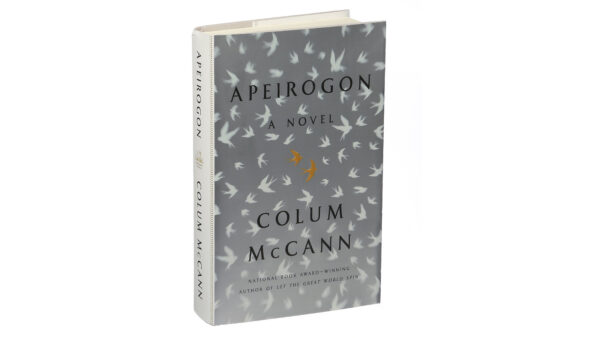 One of the founders of Combatants for Peace was Bassam Aramin. He grew up near Hebron, before being forced out of his home by Israel, and then, at the age of 17, was arrested for throwing a hand grenade (an old dud he had found) in the direction of some IDF troops. He was sentenced to seven years in prison and subjected to the usual beatings, though he also befriended several guards. He left prison committed to non-violence, and had also become fascinated by the Holocaust, something he learned about in prison. (His first thought on learning about it, watching a program on Israeli television, was “only six million? The Nazis should have tried harder.”) He eventually went to the University of Bradford in England to study the Holocaust and non-violence. In 2007 his ten-year old daughter, Abir, was killed by a trigger-happy soldier’s rubber bullet, after crossing the street from her school to purchase a two-shekel piece of candy, hundreds of yards from a rock-throwing incident. The tragic deaths of their daughters gave Rami and Bassam, who knew each other through Combatants for Peace, a new connection. They have since toured the world, sharing their stories.
One of the founders of Combatants for Peace was Bassam Aramin. He grew up near Hebron, before being forced out of his home by Israel, and then, at the age of 17, was arrested for throwing a hand grenade (an old dud he had found) in the direction of some IDF troops. He was sentenced to seven years in prison and subjected to the usual beatings, though he also befriended several guards. He left prison committed to non-violence, and had also become fascinated by the Holocaust, something he learned about in prison. (His first thought on learning about it, watching a program on Israeli television, was “only six million? The Nazis should have tried harder.”) He eventually went to the University of Bradford in England to study the Holocaust and non-violence. In 2007 his ten-year old daughter, Abir, was killed by a trigger-happy soldier’s rubber bullet, after crossing the street from her school to purchase a two-shekel piece of candy, hundreds of yards from a rock-throwing incident. The tragic deaths of their daughters gave Rami and Bassam, who knew each other through Combatants for Peace, a new connection. They have since toured the world, sharing their stories.
The book has a distinctive structure, arranged in 1001 sections, like the Arabian Nights, with the sections ranging in length from a few words to many pages. In the center of the book are the extended narratives by Elhanan and Aramin. The other sections provide information about the two men, the general condition in Jerusalem and the West Bank, or bits of information that do not, at first glance, seem particularly relevant, such as the Mediterranean flyway for migratory birds or the contents of François Mitterand’s last meal. I learned that the word “shrapnel” immortalizes the dubious invention of a Lt. Col. Henry Shrapnel, a British officer during the Napoleonic Wars. More directly relevant to the matters at hand, though I guess it’s not really funny, I laughed out loud when I read that Palestinian protestors call their throwing back tear-gas canisters in the direction of the IDF soldiers who launched them “the right of return.” Taken as a whole, however, the effect is less an exercise in trivia than a cumulative sense of the tragedy of Abir and Smadar and the deep connectedness of all things, especially our seemingly separate histories. Like Scheherazade, the narrator of the Arabian Nights, Rami and Bassam tell their stories to stay alive.
The strengths of the impressionistic narrative are also a weakness. This is a story of recent events, not a history. Those without a background in the politics of twenty-first century Israel and Palestine will not find it here. Netanyahu and the Likud, Abbas and the Palestinian Authority, are largely absent, as is almost any mention of Gaza and the Gaza Wars. The book focuses on its two main characters, and in some ways that is not enough. I wanted to hear much more about Bassam and Rami’s families. Bassam’s wife, Salwa, is a cipher, and little discussed. Rami Peled and Nurit Peled-Elhanan are the son-in-law and daughter of the revered peace activist, Gen. (ret.) Matti Peled. Although McCann presents Rami and Nurit as a “typical” Israeli family, they were anything but, with their proud and very left-wing lineage (Matti Peled died a year before his granddaughter was murdered). Nurit is a notable scholar, author, and professor at the Hebrew University, where she lectures to standing-room only classes. One of her books, Palestine in Israeli School Books: Ideology and Propaganda in Education, is available in English. She refused to allow Netanyahu to make a shiva call after Smadar’s murder, and created a furor when she blamed the occupation for the death of her daughter. She was active in the Women in Black protests, and on some occasions brought Smadar with her to the vigils. (Another book recommendation: for anyone interested in this history, I urge them to read our friend and colleague Ayala Emmett’s Our Sister’s Promised Land: Politics and Israeli-Palestinian Coexistence.) I wanted to know much more about Nurit and Salwa.
Books like Apeirogon inevitably raise the “so what” question. Yes, we have all read heartbreaking stories similar to those of Abir and Smadar for decades, reducing us to tears. All of these sad tales of shattered and bereaved parents, of sensitive, articulate people on all sides of the conflict, trapped in what seems to be an unbreakable cycle of tragedies and counter-tragedies, trying to recognize their common humanity in the other, trying to defeat the inhumanities of daily life in Israel and Palestine while the inhumanities always win. Can we ever go beyond these recitations of sorrow? Some have argued that putting Israelis and Palestinians on the same level is to give equal moral weight to the oppressor and the oppressed. That is nonsense. The imperative for the members of Combatants for Peace, for Bassim and Rami, is the end of the occupation and discovering shared moral absolutes, not seeking refuge in the “complexity” of the situation as an excuse for inaction or fence-sitting. An apeirogon, an infinite sided polygon, would, as McCann points out, would be indistinguishable from a perfect circle, and as he says several times in the course of the novel, “if you divide death by life, you will find a circle.” I’m not sure what that means, other than that the various complexities of our lives, properly understood, can collapse into in a single, overriding moral imperative, and the too-many sided geometry of the Israeli-Palestinian conflict can fall away into a shape with no sides at all.
The Israel-Palestine situation has become a central moral touchstone of our time for writers like Colum McCann and many others, not because the solution is simple, and not because, as too many seem to think, that the world holds Israel to a higher standard than any other country. (If I had a penny for every time someone has thrown that shopworn cliché in my face I would be a rich man.) It has become a moral cynosure precisely because the situation seems intractable, something beyond politics that only politics can solve. Some have argued that focusing on individual suffering sentimentalizes the geopolitical realities of Israel and Palestine. I would argue, to the contrary, that any solution must go beyond drawing new lines on a map or creative rethinking of the meaning of sovereignty but, rather, must somehow change people on an individual level, in a way better described in a novel rather than in the bullet points of a political program.
Things are impossible until they are not. While writing this review, I have been mourning the civil rights pioneer John Lewis and thinking about his legacy. Let us remember his signal accomplishment. Around 1960 the civil rights movement was effectively stalled. The Brown decision in 1954 brought about a few victories, but formal segregation in the South, if beginning to wobble, was still very much intact. John Lewis was one of the leaders of a new generation of activists, primarily Black but with some white comrades, who thought that through sit-ins, freedom rides, boycotts, and other forms of non-violent protest, legal segregation could be vanquished, and it was. A number of factors contributed to the successes of the civil rights struggle, but without ignoring a host of political and sociological matters, I would argue that the most important of them was a contagion of moral witness, of people no longer willing to tolerate the intolerable, people willing to state the hard truths to themselves, to their friends, to their enemies, without fear and without hate, and gaining strength in numbers. As the African American religious thinker Howard Thurman once said, “The crux of the problem is not merely that we desire the right and find it difficult to achieve it, but that it is also true that, again and again, we do not desire to desire the right.” Like Bassim and Rami, John Lewis desired the desire.
The essence of non-violence, to me, is less about the violence/non-violence question. No protest movement of the oppressed worth its salt will ever be entirely peaceful. Rather, it is the recognition that genuine social and political transformation requires a personal transformation, one that I would call “spiritual” without in being necessarily in any way “religious,” a discovery of one’s deepest moral self and one’s ultimate resources. We can debate Beinart’s essay until our tongues cleave to the roofs of our mouths, but until the people of the two unhappily conjoined nations of Israel and Palestine follow in the footsteps of the Bassim Aramins and the Rami Elhanans in sufficient numbers, it is likely to be just so much futile palaver.
There is a rather silly statement that regularly makes the rounds these days, spuriously attributed to Einstein, to the effect that the definition of insanity is to try the same thing over and over again and expect a different result. Maybe that is true for rocket science and the higher mathematics, but it is not true in politics and for the forlorn hopes of the left. We have no choice but to endlessly refight our battles, seeking a different outcome, hopefully learning from our mistakes and adjusting to new circumstances, but knowing that we have fought what is essentially the same battle many times before, and even if we succeed, we will have to fight it again. Those of us who can only cheer and argue from the sidelines need to read Colum McCann’s extraordinary new book, and hope that the acts of astonishing moral courage it depicts will not have been in vain. May the sparks of Bassim and Rami ignite a conflagration. Deep in my heart, I do believe, that we shall overcome, someday.
—
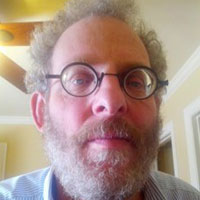
Peter Eisenstadt is a historian and long-time Israeli-Palestinian peace activist, currently living in Clemson, South Carolina. His latest book, Against the Hounds of Hell: A Life of Howard Thurman, is forthcoming from University of Virginia Press, and should be available around the time President Biden takes the oath of office. He is a member of the Board of Partners for Progressive Israel.

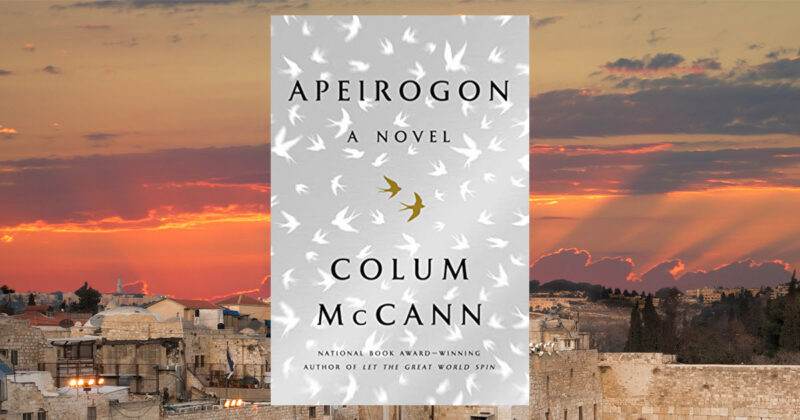


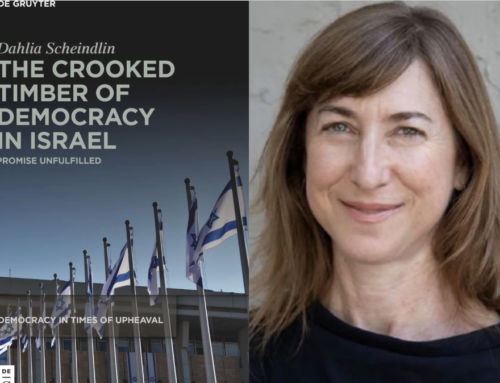
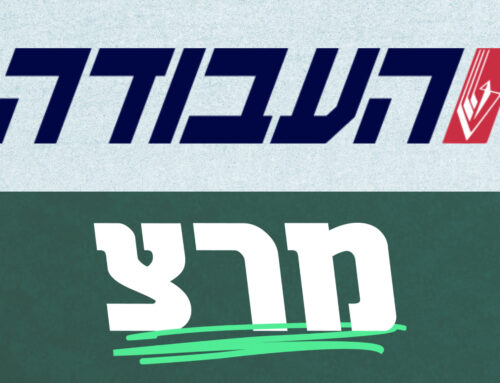

Here is a straight very vital article. I like it! I recommend it to my friends. Write more of this!